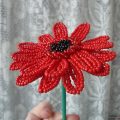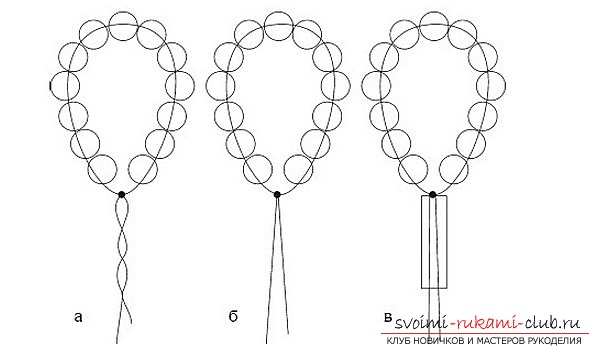
Beadwork and weave varieties for beginners
One of the simplest techniques in beadingis a counter weaving. At the same time mastering it, you will have the opportunity to create almost any, even quite complex, bead products. The main essence of the technique of counter weaving is that beads are threaded on one thread from different ends simultaneously, but the ends of the working thread will pass into this bead from two opposite sides. Such a counter-beading allows you to make many beautiful and intricate items with your own hands.  To start studying this method of beadworkYou will need a thin wire and beads of any color. Let's try to make a petal for a product made of beads in the form of a flower. On the wire should be put on three beads. Then we take two opposite ends of the wire and stretch them towards each other through two beads, leaving the third a little to the side. After that, gently tighten the wire. Now on one of the ends of the wire we string three more beads and also through all three beads we stretch the wire towards each other from two sides. Again tighten the wire. We do the weaving in this way, sequentially increasing the number of beads, to the required size of the width of the petal.
To start studying this method of beadworkYou will need a thin wire and beads of any color. Let's try to make a petal for a product made of beads in the form of a flower. On the wire should be put on three beads. Then we take two opposite ends of the wire and stretch them towards each other through two beads, leaving the third a little to the side. After that, gently tighten the wire. Now on one of the ends of the wire we string three more beads and also through all three beads we stretch the wire towards each other from two sides. Again tighten the wire. We do the weaving in this way, sequentially increasing the number of beads, to the required size of the width of the petal. 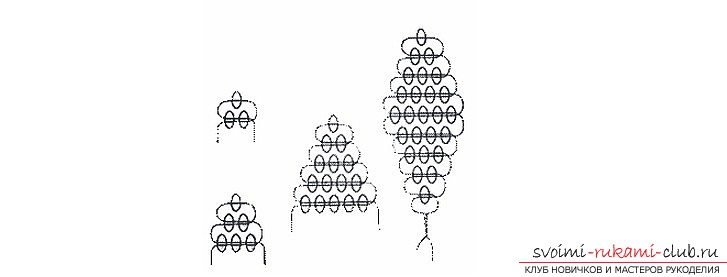 Then we do the same, but stringing the beads consistently in descending order. The last row should include two beads. Then the wire is twisted and the petal itself is ready.
Then we do the same, but stringing the beads consistently in descending order. The last row should include two beads. Then the wire is twisted and the petal itself is ready. 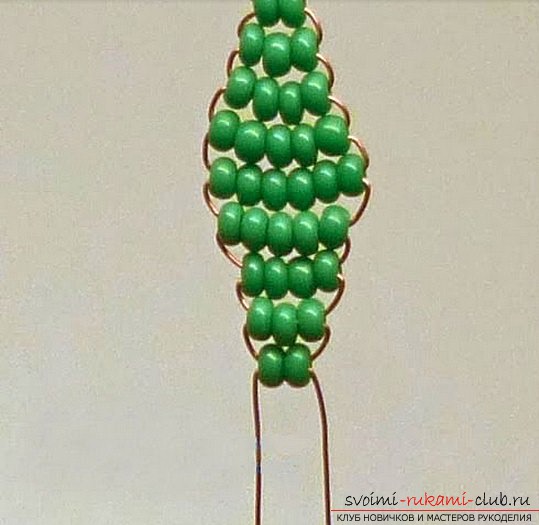 Having completed several such petals independing on the conceived flower, connect them together and twist the ends of the wire of all the petals together. This way of beadwork, using different schemes, you can create not only flowers, but also a variety of products in the form of jewelry or souvenirs.
Having completed several such petals independing on the conceived flower, connect them together and twist the ends of the wire of all the petals together. This way of beadwork, using different schemes, you can create not only flowers, but also a variety of products in the form of jewelry or souvenirs.  Also there is another very popular speciesWeaving with beads with which you can create great crafts and souvenirs. Using the technique of loop beading, you can make a variety of products in the form of flowers, butterflies, beaded trees and tastefully decorate your apartment.
Also there is another very popular speciesWeaving with beads with which you can create great crafts and souvenirs. Using the technique of loop beading, you can make a variety of products in the form of flowers, butterflies, beaded trees and tastefully decorate your apartment.  To master this method of weaving is easy enough. You will need to start all the same beads and wire. There are two ways to make a loop of beads. Let's consider both variants. First we string the required number of beads onto the wire and bend it so that the loop turns out. The number of beads for the loop always depends on the product that you plan to perform.
To master this method of weaving is easy enough. You will need to start all the same beads and wire. There are two ways to make a loop of beads. Let's consider both variants. First we string the required number of beads onto the wire and bend it so that the loop turns out. The number of beads for the loop always depends on the product that you plan to perform. 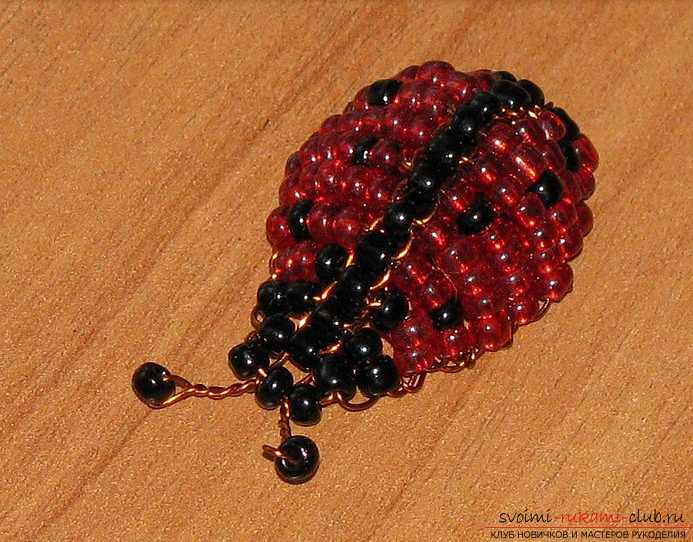 The first way: The lower part of the resulting loop is pressed with one hand so that the beads are pressed against each other and can not slide off the wire. With the other hand we twist the ends of the wire together, just below the resulting loop. This option is considered the easiest.
The first way: The lower part of the resulting loop is pressed with one hand so that the beads are pressed against each other and can not slide off the wire. With the other hand we twist the ends of the wire together, just below the resulting loop. This option is considered the easiest. 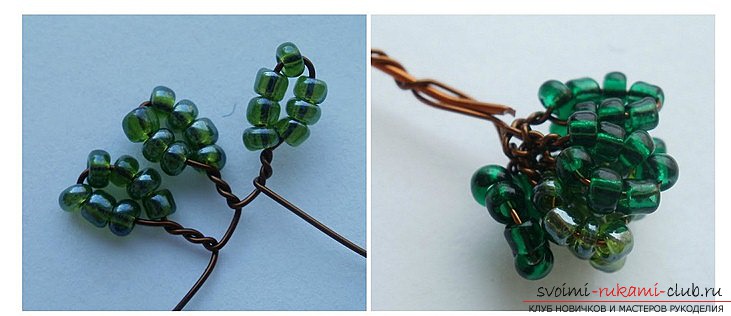 The second way: to fix the loop, we pass both ends of the wire through one bead. This process can be performed by pushing the two ends of the wire into the hole of the bead from one side of it, thereby placing the bead vertically or with a horizontal bead, to pass the two ends of the wire from opposite sides in a direction towards each other.
The second way: to fix the loop, we pass both ends of the wire through one bead. This process can be performed by pushing the two ends of the wire into the hole of the bead from one side of it, thereby placing the bead vertically or with a horizontal bead, to pass the two ends of the wire from opposite sides in a direction towards each other.  It should be noted that, depending on the requiredvariant of weaving, on one piece of wire there can be, as one, and at once a few, made by you loops. Due to this technique of loop weaving from beads, such details of products as leaves for various plants and bouquets, flower petals or branches of beaded trees are performed. Having learned how to work with these two simple techniques of beading, you can already create simple but beautiful beadwork, even if you are a beginner in this kind of needlework. And if you apply to these skills useful curiosity and a little patience, then in time you can learn more complex and intricate kinds of weave and develop your skills to a professional level. Successful training!
It should be noted that, depending on the requiredvariant of weaving, on one piece of wire there can be, as one, and at once a few, made by you loops. Due to this technique of loop weaving from beads, such details of products as leaves for various plants and bouquets, flower petals or branches of beaded trees are performed. Having learned how to work with these two simple techniques of beading, you can already create simple but beautiful beadwork, even if you are a beginner in this kind of needlework. And if you apply to these skills useful curiosity and a little patience, then in time you can learn more complex and intricate kinds of weave and develop your skills to a professional level. Successful training!
